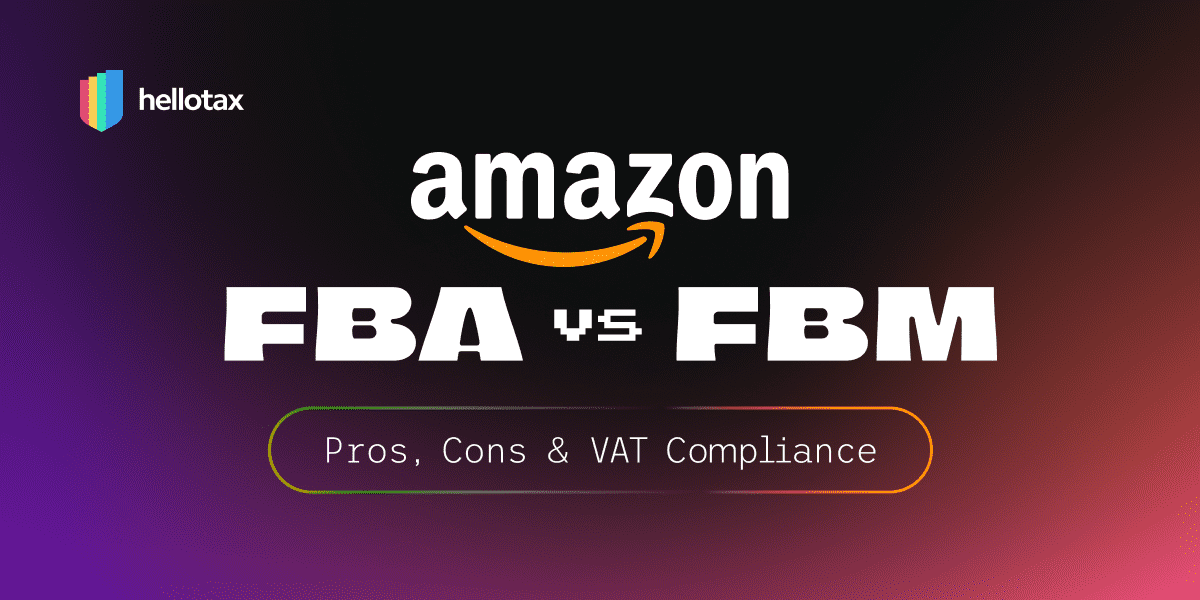Did you have to register for VAT in the UK, i.e. England, Scotland or Wales? Then you also have to submit VAT returns. In the following article, we’ll explain when to file VAT returns, how to file them, and more.
Antonia Klatt
Last Updated on 9 May 2022
When do I have to file a VAT return in the UK?
VAT returns must be submitted if you completed a VAT registration. In detail, there are three situations in Great Britain in which the filing of VAT returns is necessary.
1. After a mandatory VAT registration of UK sellers
- English and other UK traders and entrepreneurs must register for VAT as soon as they realise that they will exceed the £85,000 VAT threshold in the next 30 days.
- The same applies to UK sellers who have exceeded the threshold in the last 12 months.
- In both cases, the registered entrepreneurs must submit VAT returns from the time of registration and possibly also retrospectively.

Book a free consultation
Our VAT experts are happy to help you. Book a free consultation today!
2. After a mandatory VAT registration of foreign and EU sellers
- EU Sellers and other foreign sellers must register in the UK when selling, importing or shipping goods or services to Britons.
- Northern Irish businesses that only sell VAT-free products must register if they buy goods or services worth over £85,000 from EU businesses.
- In both cases, the filing of UK VAT returns is essential.
3. After a voluntary registration for VAT
- Furthermore, VAT returns must be submitted if sellers have registered voluntarily for VAT.
- Early registration helps entrepreneurs to avoid penalties.
Do you have to register for VAT in the UK? Then you also have to submit VAT returns! hellotax can help with this! We support you with VAT registration and filings of VAT returns. Contact us and continue to focus on your business in England.
How to file VAT returns in the UK
Before you can submit a VAT return in England, you’ll first have to compile your data and fill out the correct form. The UK Tax Authorities’ official website offers instructions on how to fill out a VAT return correctly. Where you can find the VAT return form depends on whether you signed up for Making Tax Digital for VAT. This new program aims to make the UK tax system the most digital in the world.
If you have already signed up for Making Tax Digital for VAT, you will need to find accounting software that is compatible with the program. Otherwise you can use your gateway account. Once you find the form, you can fill it out.
Note that sellers and companies registered in Northern Ireland still need to declare EU sales on their VAT return and include their EC sales list.
In the UK, VAT returns are only to be submitted electronically. To do this, you need a VAT number and an online account that you already used when registering.
When do I need to submit VAT returns in the UK?
Most businesses are required to file their UK VAT returns four times a year. A new billing period, therefore, begins every three months. The deadline for submission is always the same: one calendar month and seven days after the end of the previous accounting period.
There is also an exception rule: the annual VAT statement. If this is used, only one VAT return must be submitted per year. However, an estimated VAT amount based on the last year must be prepaid at the beginning of the year. At the end of the year, a seller then either receives a refund or has to pay additional VAT. This scheme can only be used if your annual turnover is below £1.35 million.
A final VAT return must also be completed and submitted when a store closes or sellers cease their operations. This return must then be sent by post.

Book a free consultation
Our VAT experts are happy to help you. Book a free consultation today!
Frequently Asked Questions
How often do I need to file VAT returns in the UK?
In England, VAT returns must be submitted quarterly, i.e. every three months. There is also the option to submit only one return per year.
I have not submitted a VAT return – what can I do now?
There are penalties and fines for late filing, depending on how late the filing was and how much VAT is involved. The hellotax professionals can also help you register for VAT retrospectively and submit returns retrospectively.
What are the different VAT rates in the UK?
The standard VAT rate in England is 20% and applies to most goods and services. For example, the reduced rate of 5% applies to certain products such as child seats and energy. Food and children’s clothing are taxed at 0%.


